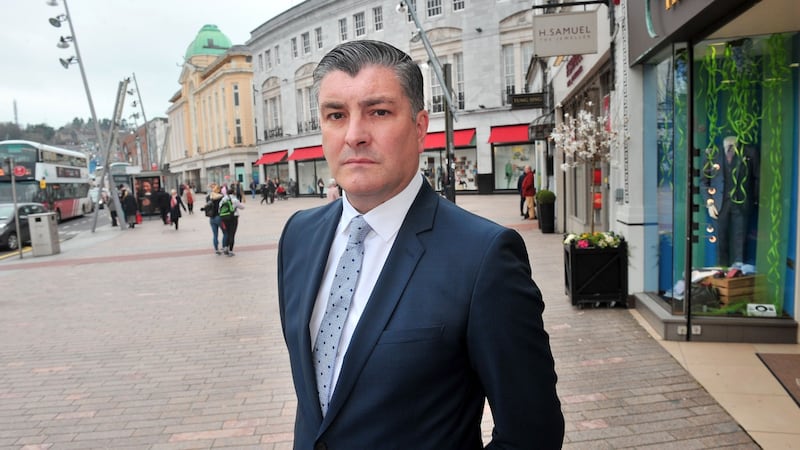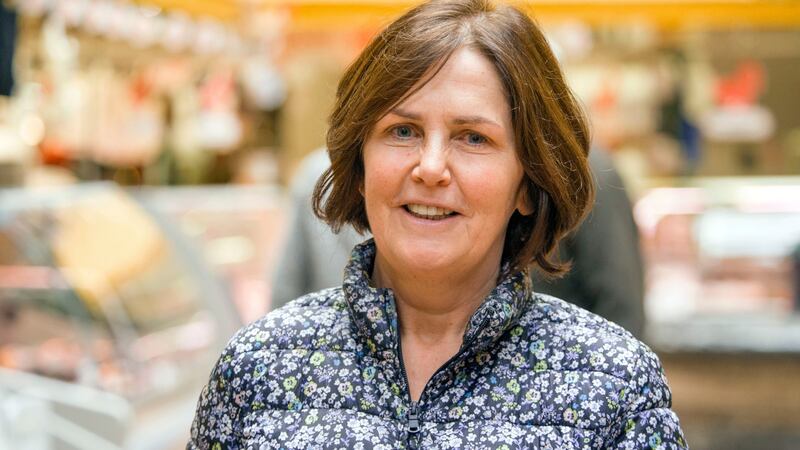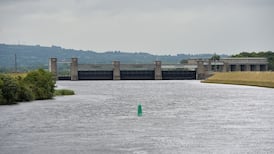Since opening in 1860, Fitzgerald’s Menswear on Patrick Street in Cork has managed to weather wars, uprisings and recessions.
But the store’s managing director fears it is now facing the biggest challenge yet – a daily driving ban on the street from 3pm to 6.30pm.
Eddie Mullins said it felt as if Cork City Council was causing "death by a thousand cuts" with the introduction of the scheme, under which traffic on Patrick Street will be limited to buses, taxis, bicycles and emergency vehicles for 3½ hours a day.

“There was a statement from a councillor yesterday about letting it ‘bed in’ or giving it a chance,” Mr Mullins said. “Businesses don’t have the time to absorb experiments by Cork City Council. Staff have to be paid. There is no concept of that with the council.
“We have been through wars and uprisings and all sorts of stuff. We keep taking hits over the years.”
Mr Mullins said that independent retailers were “an endangered species” and that when one “goes down, they don’t come back”.
“There is a disconnect with councillors and City Hall. Things are not all right.”
Traffic measure
The traffic measure was introduced on March 27th. It was first mooted six years ago as part of the Cork City Movement Strategy with initial proposals for a 12.30pm to 6.30pm car ban shot down by city councillors.
Pat O’Connell, who runs a fishmongers in the English Market, said the initiative was “well intentioned” but was causing a “chaotic mess in the city centre”.

A former president of the Cork Business Association, Mr O’Connell said businesses were furious because shoppers were avoiding the city centre in the afternoon.
“We are coming out of the worst recession the country has ever had. We have had a really bad winter. Businesses are suffering. If you are going to change something, you are going to have to explain it.”
Frank Lee, owner of Tung Sing Chinese restaurant on Patrick Street, had expressed concern prior to the scheme being introduced about the impact it could have on its revenues.
He said he put on extra staff as he expected a busy Easter period but that the customers did not materialise.
“There was more people in town the Sunday after the snow than that Sunday afternoon [Easter Sunday]. It is very difficult,” he said.
Loss of atmosphere
Visitors to Cork city centre noted a loss of atmosphere on the streets as a result of the traffic ban.
Bernie O’Sullivan, from Rochestown, who was buying food in the English Market, branded the new scheme a “disaster”.

“It is a nightmare. It is really bad. You know now not to go into town in the afternoon,” she said. “I come in to town in the mornings now and it is a case of a quick in and out. I found out about it [the traffic plan] when there was no cars. I knew nothing about it.”
Evelyn Corcoran, a shopper from Blackrock in the city, said she could not understand the thought process behind the ban.
“This was a main street for deliveries always. It survived all those years. Why do this now? ”
Time of adjustment
Cork City Council said traffic changes normally take a period of time to bed in as drivers adjust travel patterns. Traffic patterns were being monitored and adjustments to traffic flows would be made as necessary, it said.
“Better routing of through traffic and improvement of bus services are necessary responses to the growth in the city’s workforce and residential population,” it said. “This prioritisation on Patrick Street will reduce delays to the scheduled timetables and ensure a more reliable bus service.”
The council said there was extensive consultation with traders around the Patrick Street changes – regarding both the strategy and implementation.
“All restrictions are clearly signposted and the council is asking drivers to continue to pay particular attention to these signs and to be patient with other road users as they adjust to the new layout.”
Mr Mullins said he recently came across pictures of Patrick Street in the 1940s and was struck by how crowded the city streets were back then.
“Groups of women, groups of men dressed up, kids playing and there was a vibrancy about the city centre. That vibrancy was coming back. It was coming back strong. It is like death what they are imposing on us again.”










